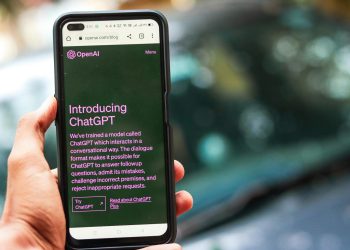Understanding Fine-Tuning Models
Getting a handle on how to tweak language models can make all the difference in tapping into these technology giants.
Fine-Tuning vs. Training from Scratch
Fine-tuning is kind of like giving a model a little extra polish to make it shine in a certain area. You take a model already in training and teach it a new trick using a smaller set of data specific to the job. With this, we get to save on time and effort, making it a neat shortcut. When you train from scratch, though, you're starting from zero, teaching everything from basic A-B-Cs with huge chunks of labeled info. If you want to dive deep into this topic, check out Medium for more insights.
| Chance to Shine | Fine-Tuning | Training from Scratch |
|---|---|---|
| How Much Data You Need | A handful of labeled examples | Loads and loads of labeled data |
| Brain Power Required | Easier on the system | Hits the hard drive hard |
| Small Data Success | Knows its stuff with just a bit of data | Needs a whole lot of hand-holding |
| When to Use | Good for many tasks | Best if avoiding model bias or when you have a ton of data |
| Options and Control | Kept in check | Sky's the limit |
Perks of Fine-Tuning Models
Fine-tuning's got quite the list of perks, rightfully earning its spot in the toolkit for getting pre-trained language models ready for showtime:
-
Quick and Easy: Fine-tuning gets you to the finish line way faster than the start-from-scratch option. This speed comes from standing on the shoulders of a model already packed with smarts from past training.
-
Doesn't Need Much Data: It plays well even when the data's on the lean side. Just a few hundred or a couple of thousand examples can set you up nice and proper. Check out the Medium article for a deep dive on this.
-
Chameleon Skills: Pre-trained models can be tailored to different jobs—be it analyzing sentiment in reviews, translating languages, or pulling details from data. This versatility makes them handy in many fields, as seen in applications of large language models.
-
Wallet-Friendly: With the light load on data and processing power, fine-tuning doesn't break the bank, making it a sweet deal, especially for startups and smaller companies.
By tapping into these perks, businesses can pump more value out of deep learning language models and get them working their magic in real-world settings.
Have a look at more about state-of-the-art language models and figure out how they can fit your industry needs like a glove.
Fine-Tuning Large Language Models
Importance in NLP Industry
Fine-tuning language models (LLMs) is like the "secret sauce" in the Natural Language Processing (NLP) field these days. Big shots and tech nerds are putting their money where their mouth is, splashing out billions on research and development (SuperAnnotate Blog). These LLMs aren't just fancy toys— they're shaking up industries left and right. Companies are all in, tweaking these models to power up their NLP apps, and fine-tuning isn't just an option—it's a game-changer for boosting performance.
This fine-tuning thing? It's like giving a pre-trained model a custom makeover for your business. Imagine prepping it to talk like your industry, nail vital tasks, and echo your brand's voice (SuperAnnotate Blog). Plus, it keeps nosy parkers at bay by sticking to strict data privacy rules—super important for sectors dealing with sensitive info.
Benefits of Fine-Tuning LLMs
Why mess around with fine-tuning LLMs? Here's why they're a big deal in artificial intelligence and NLP:
-
Top-Notch Task Performance: Fine-tuned versions ace special tasks like spotting feelings in text, answering questions, or wrapping up documents in a neat summary. Custom job? Check. Better accuracy? Check again (DataCamp).
-
Saving Money and Brains: Enter Parameter-Efficient Fine-Tuning (PEFT) techniques like LoRA and QLoRA. They cut down memory hogging and brainpower during training by playing with just a few knobs—perfect for the big guns (Acorn Labs).
-
More Useable Across the Board: Fine-tuning isn't just about improving; it's about expanding. From a chat-bot that politely declines your credit card application to a tool that helps doctors diagnose—there's a world of possibilities (DataCamp).
-
Talks Just Like Your Brand: With fine-tuning, your brand's "personality" shines through in every interaction. Makes chats with customers smooth and on-brand (SuperAnnotate Blog).
| Benefit | Description |
|---|---|
| Top-Notch Task Performance | Boosts accuracy for picky NLP tasks |
| Saving Money and Brains | Lowers computational needs with PEFT methods |
| More Useable Across the Board | Makes models handy across various industries and tasks |
| Talks Just Like Your Brand | Fits model outputs to the specific vibe and lingo of your brand |
Tuning those big brains— I mean, models—is more than just a performance tweak. It's about making these generative AI brainiacs work smart, not just hard, for business goals. By tackling fine-tuning, companies can ride the wave of cutting-edge language models while meeting unique industry demands. To geek out more on LLMs, check out our page on how do large language models work.
Approaches to Fine-Tuning
Tweaking large language models (LLMs) is a nifty way to boost their smarts for certain gigs. Let’s break down two main ways to fine-tune these massive brains: supervised learning tactics and methods that don’t hog too many resources.
Supervised Learning Strategies
Supervised learning is all about taking a model and feeding it labeled examples so it gets better at specific stuff (shoutout to SuperAnnotate Blog for useful insights). The big guns here are full fine-tuning and instruction fine-tuning.
Full Fine-Tuning
This is the "go big or go home" strategy. Every single part of the model gets an update with the labeled data. It’s like a makeover for better performance, but be ready to burn through some serious computing power.
| Method | Parameter Update | Computing Needs | Benefit |
|---|---|---|---|
| Full Fine-Tuning | Everything | High | Huge boost in task-specific performance |
Instruction Fine-Tuning
Here, you talk to the model in clear, natural language, giving it instructions for what you want. This can work wonders with fewer trips around the training block.
| Method | Parameter Update | Computing Needs | Benefit |
|---|---|---|---|
| Instruction Fine-Tuning | By Instructions | Medium | Boosts with easier direction |
For more details on natural language processing models, check out our handy resources.
Parameter-Efficient Fine-Tuning Methods
These brainy tricks, known as parameter-efficient fine-tuning (PEFT) methods, clean up the clutter by updating only a slice of the model's parameters. This means less work and fewer headaches like overfitting (thanks, IBM for the deets). Say hi to adapter-based techniques and low-rank adaptation.
Adapter-Based Techniques
Think of adapters as little helpers you add to the model. These adapters do all the heavy lifting while the main model kicks back. This trim-down means you save on memory and time.
| Technique | Parameter Update | Computing Needs | Benefit |
|---|---|---|---|
| Adapter-Based Techniques | Just the Adapters | Low | Low memory and time, keeps core intact |
Low-Rank Adaptation
Only the low-rank bunch of parameters gets a makeover here. This nimble tactic scores high without the chore of retraining the whole shebang, perfect for quick fine-tuning dashes.
| Technique | Parameter Update | Computing Needs | Benefit |
|---|---|---|---|
| Low-Rank Adaptation (LoRA) | Low-Rank Group | Very Low | Quick tweaks, saves computing resources |
These methods are your best pals in NLP when saving power is the name of the game.
Dive into our treasure trove of knowledge on generative AI models and transformer models for a deeper understanding.
With all these ways to tweak, fine-tuning is a powerful tool for making models sharp for any task, driving performance to the max.
Criteria for Fine-Tuning Decisions
When deciding if we should tweak a language model, there are a few things to mull over. Think industry needs, and keeping our data safe and sound.
Specific Industry Needs
Tinkering around with language models means making off-the-shelf models fit more snugly for special tasks or fields. This tweak-fest can make 'em work way better. It’s a must when a model's gotta be spot-on for a certain industry or biz. Sectors like healthcare, finance, and customer support have their own jargons and situations that plain models might just fumble.
By fine-tuning, we're tuning the model right to the rhythm of a business, making sure it hits all the right notes. We're talking sprucing up interactions to sound like the brand, boosting those tricky-to-get functions, and handling rare biz-specific cases like it's nothing. Fine-tuning doesn’t just make things better; it also slashes the effort and time of building models from scratch.
Industry Need Examples:
- Healthcare: Doctor speak and bedside conversation.
- Finance: Number crunching and spotting fraudsters.
- Customer Support: Answering typical asks and feedback smartly.
Data Privacy and Security Worries
Guarding data privacy and security is like putting up a fortress around language models when adjusting them. It’s vital to shield sensitive stuff, especially when dealing with personal or secret business data. Tinkering can help craft models that are super cautious, playing nice with all the rules and standards bouncing around in various fields.
To dodge unwanted snooping and the headaches of data leaks, we gotta keep our data safeguards tight and steady when fine-tuning. This means picking data that’s scrubbed clean of personal bits and sticking to safe data handling throughout the whole machine-learning journey.
Key points to chew over include:
- Keeping in line with rules like GDPR or HIPAA.
- Locking up data handling and storage tight.
- Making sure tweaked models don’t spill any secrets.
To wrap it up, sizing up specific industry needs and keeping a close watch on data privacy are major players when thinking about fine-tuning language models. Nail these, and we’re on track to jazz up the performance of our models, tailoring them to our very special wants while sticking to high privacy and security marks.
To dive deeper into how language models can be styled to fit industry-specific flavors, and to zoom out on the larger picture of large-scale language generation, you might wanna dig into more ways large language models are used.
Challenges in Fine-Tuning
So you're tinkering with big-ol' language models, and like anything good and fun, it ain't without its snags. You gotta dodge these bits and bits of trouble to keep those models not just another pretty face, but making sense, too.
Pitfalls to Avoid
First off, let’s talk headaches; and by that, I mean overfitting. It’s like when you're so busy memorizing trivia, you forget how to chat with regular folks. The model clings to every quirk in the training data, meaning it flunks the tests you actually care about—like with real new stuff. Keep an eye on the model's report card with a validation set and try using techniques like dropout to shake things up a bit, or gently enforce a little weight discipline.
Then you've got underfitting, which is the opposite problem. Imagine trying to fill in a 1000-piece jigsaw with only 100 pieces. If your model's coming up blank on the basics, it’s maybe just too simple—or maybe it didn't hit the books hard enough. Check in on how your model's doing, and don't be shy about boosting its brainpower.
There's another critter called catastrophic forgetting. Picture cramming for finals, but that means forgetting everything from the midterms. That's your model stumbling over old stuff while learning the new. Tactics like elastic weight consolidation might just save the day here. Oh, and keep an eye out for data leakage—think of it as sneaky crib notes getting mixed into your test, ruining your honest measure. Stick to strict data borders and clean it up right.
| Pitfall | What's Happening? | How to Fix It |
|---|---|---|
| Overfitting | Riding on bike with training wheels still attached | Try reg methods, track those metrics |
| Underfitting | Model’s asleep at the wheel | Level up complexity, hit the books harder |
| Catastrophic Forgetting | Forgetting old friends in pursuit of new ones | Elastic weight hacks, rehearsal drills |
| Data Leakage | Peeking when you shouldn't | Keep data gates closed, no peeking! |
Impact of Overfitting and Forgetting
Overfitting and forgetting - they sound like a bad hangover and a lousy memory. First off, overfitting's where your model starts memorizing all the wrong things, turning into a know-it-all that flops when it walks out into the big wide world. Spot this one early with your trusty validation set and try cross-validation too, if you've got the time.
On the flipside, catastrophic forgetting is that pesky problem where every time the model learns something new, it chucks out something old. Dragging along a neural network language model across multiple tasks? You’re gonna see this. Combat this by enlisting help from progressive neural networks or sprinkle in some regularization tricks.
For a deep dive—and we mean deep, grab a coffee—into stopping these issues in their tracks, check out the stuff on DataCamp and Medium. Additionally, scarf down our reads on state-of-the-art models and good ol' eval metrics, which might just be the peanut butter to your jelly.
Staying clued up and cracking down on these challenges helps keep your fine-tuning game strong, and means your models aren't just show ponies—they run the races, win the prizes, and charm the crowd, too.
Evaluating Fine-Tuned Models
To keep fine-tuned language models in tiptop shape and useful, it’s a must that we put them through some serious testing. We're talking about digging into performance metrics and using the right tools to keep tabs on them over time.
Essential Evaluation Metrics
When we assess our models, we don’t leave any stone unturned. We lean on metrics like precision, recall, and the F1-score to really see what’s going on with these models. These numbers help us know how spot-on and trustworthy a model is.
| Metric | What It Tells Us |
|---|---|
| Precision | How many of the positives guessed by the model were spot-on. It’s about how many times the model got it right when it said 'This is the one!' |
| Recall | Out of all the actual positive cases, how many did the model catch. This lets us know how much the model notices what it should. |
| F1-score | This is like a balancing act between precision and recall. It's a neat little number that tells us how the model is doing overall on those two fronts. |
| Accuracy | The percentage of all the guesses made by the model that were correct—both the yes's and the no’s. |
Tools for Model Evaluation
Gotta have the right gear to size up our models effectively, right? We use a couple of mainstays like Scikit-learn and TensorBoard to keep an eye on things during and after the fine-tuning stage.
| Tool | What It's Good For |
|---|---|
| Scikit-learn | This one’s like the Swiss Army knife for checking how well machine models are doing. It's great for crunching numbers on precision, recall, and that F1-score we talked about. |
| TensorBoard | An awesome tool for seeing how the model loss and accuracy measure up over time. It’s the go-to for tracking progress when you’re knee-deep in tweaking the model with TensorFlow. |
For a deeper dive into these metrics, check out our article on language model evaluation metrics.
The test set we pick isn’t just any old collection of data. It has to be right on the money to really show how well the model can handle different types of data in real-world scenarios. By weaving together varied evaluation techniques and our go-to tools, we make sure our fine-tuned models crush it in tons of applications, from natural language processing models to generative AI models.
If you're looking to explore more, wander through topics like pre-trained language models and language models for information retrieval to get the full picture of where these eval techniques fit in.










